Rooting for Autumn
When you imagine the best time for planting, what season do you think of? For most gardeners, spring is when they plant as the weather gets warmer and the ground thaws. And yes, spring is great for planting annuals and vegetables. However, if you’re considering native perennials, trees, and shrubs, fall is actually the ideal time to get your seedlings in the ground!
Why?
Simply put, autumn’s warmer soil, cooler air, and more consistent rain provide the most favorable conditions for establishing strong roots. As hours of daylight decrease and air temperatures get chilly, deciduous trees drop their leaves and stop making new flowers and fruits—instead they channel all their energy into deepening their roots into cozy soil temperatures still retained from summer’s sun.
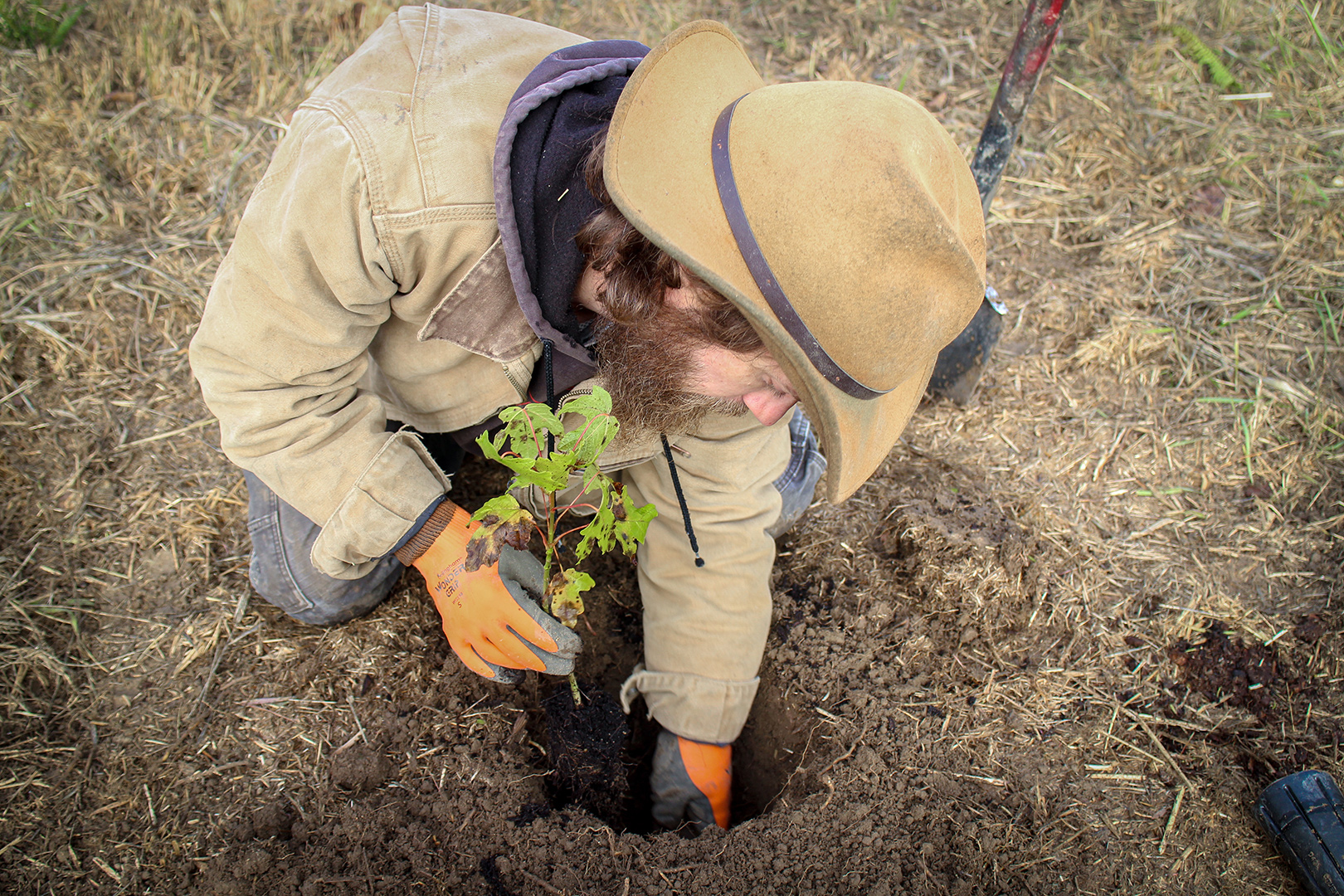
Establishing deep roots is important for plants for several reasons
- Access to Water: Deeper roots allow plants to reach water stored deeper in the soil, especially during dry summer months.
- Nutrient Absorption: Deeper roots can access a wider range of soil layers, providing better access to essential nutrients that might be concentrated at different depths. This contributes to healthier and more vigorous above-ground plant growth.
- Stability and Support: Strong root systems anchor plants firmly in the ground, preventing them from being easily uprooted by wind, rain, or other disturbances.
- Long-Term Success: Deep-rooted plants are generally more resilient and better equipped to handle changing environmental conditions over the long term.
- Ecosystem Benefits: Plants with deep roots can improve soil structure, reduce erosion, and contribute to overall ecosystem health by cycling nutrients and providing habitat for wildlife.
In essence, planting in fall to establish deep roots support native plants’ ability to thrive in a variety of conditions, leading to better growth, resilience, and long-term success.
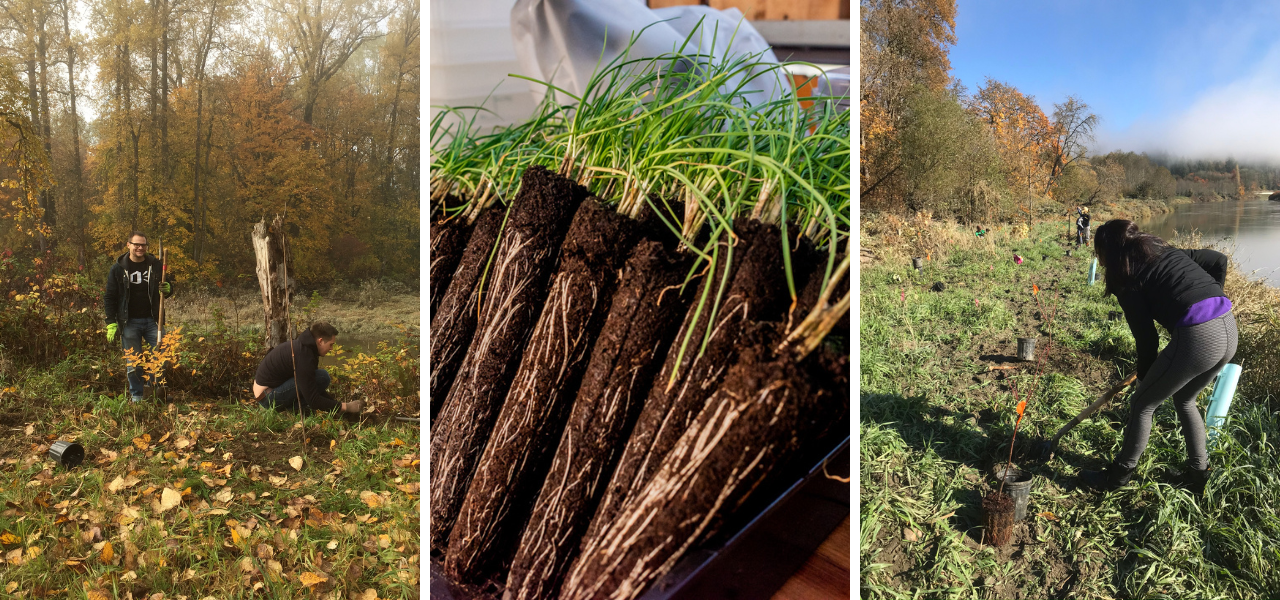
Tips for success
After cultivating and planting thousands of natives in various soil and weather conditions, Oxbow’s Native Plant Nursery and Conservation teams have learned several lessons over the years about how to have a successful fall planting. Here’s a few tips they want to share:
- Timing: As long as neither the ground nor your plant’s roots aren’t frozen, the fall is an ideal time for planting.
- Site Selection: Find a spot that has the appropriate sun exposure (don’t forget to consider years down the road when other nearby plants might create more shade!), soil type, and moisture requirements for your plant. Be sure that there will be enough space for the plant’s mature height and size. Think about the foliage and flower color, and timing of blooming and fruiting compared to other plants around it.
- Planting: Check out our Native Plant Nursery’s handy step-by-step Planting Guide to help get you started.
- Watering: In regions like the Pacific Northwest, where fall rains are frequent, additional watering is usually unnecessary. During dry spells, provide a drink to your plants and let nature take over.
- Mulching: For trees and shrubs, apply a layer of 3″-6″ of arborist chips or woody mulch. Mulch acts as a buffer against winter temperature fluctuations, safeguarding precious root systems.
Fall Plant Selection Suggestions
Thanks to the Pacific Northwest’s wet, temperate climate, most shrubs, trees, and other perennial Washington native plants do incredibly well planted in the fall. To get you started, Oxbow’s Native Plant Nursery team has suggested a few species to consider planting this autumn.
Goldenrod (Solidago lepida)
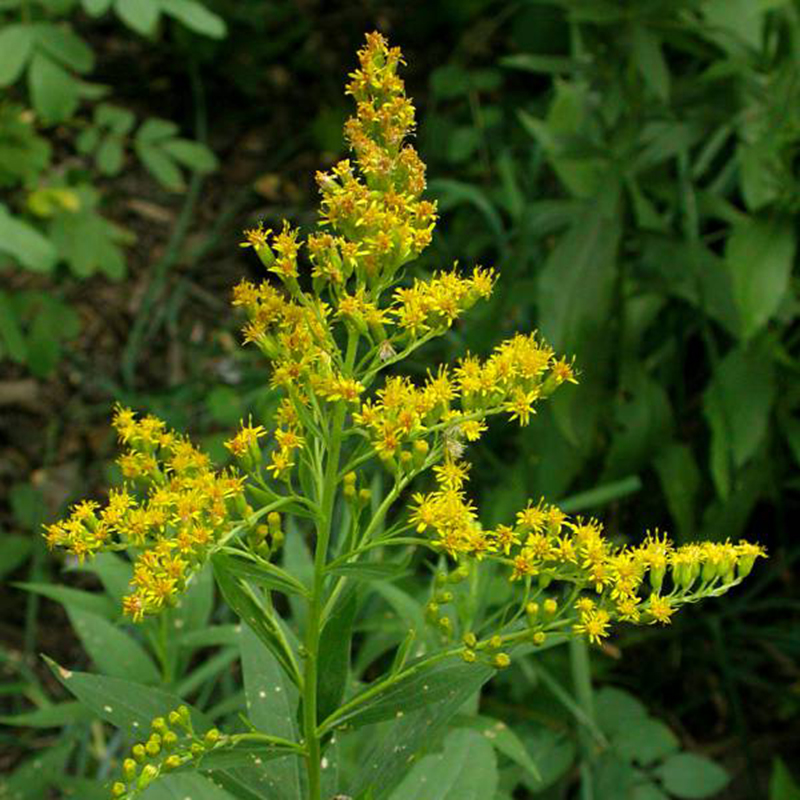 A robust perennial with long creeping rhizomes flourishing in diverse Pacific Northwest landscapes. Its small yellow flowers and unique non-splitting achene fruits add charm. From July to October, this versatile ground cover thrives in dry to moist environments, captivating pollinators like butterflies, moths, and honeybees. Beyond its beauty, it is treasured for cut flowers and boasts ethnobotanical healing qualities, making it an asset in meadows and fields across different habitats and elevations.
A robust perennial with long creeping rhizomes flourishing in diverse Pacific Northwest landscapes. Its small yellow flowers and unique non-splitting achene fruits add charm. From July to October, this versatile ground cover thrives in dry to moist environments, captivating pollinators like butterflies, moths, and honeybees. Beyond its beauty, it is treasured for cut flowers and boasts ethnobotanical healing qualities, making it an asset in meadows and fields across different habitats and elevations.
Black Cap Raspberry (Rubus leucodermis)
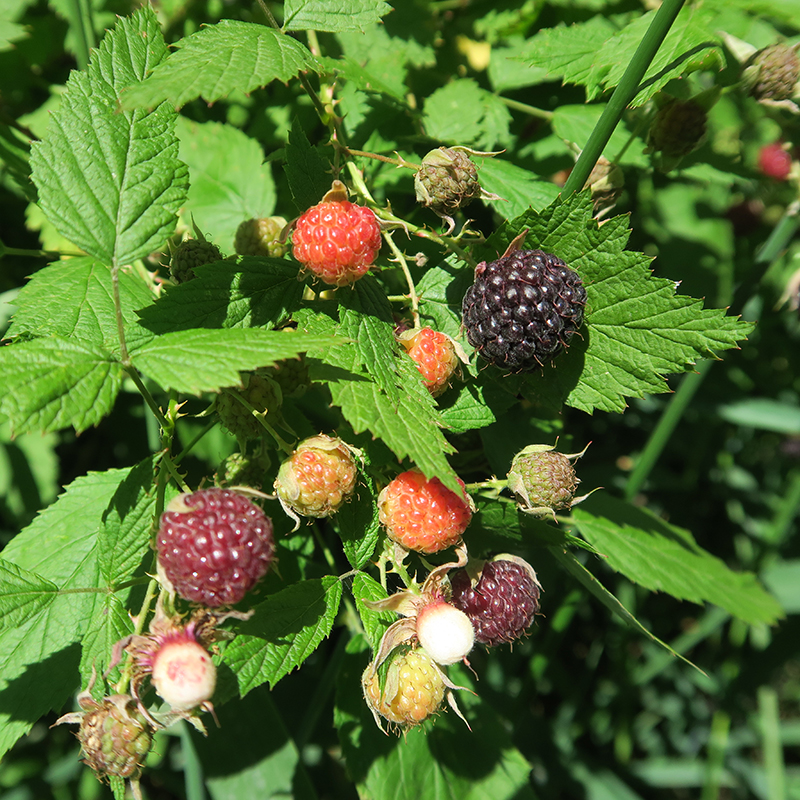 Also known as Whitebark Raspberry or Black Raspberry, this Rubus species is a testament to the rich diversity of brambles. Its stems wear a waxy coating that’s whitish or bluish, and they have flat thorns for protection around its yummy dark purple-black berries. These berries are tasty, fresh, or dried and can make an excellent purple dye! Animals love these berries, too—birds, raccoons, squirrels, and deer all enjoy eating them and the leaves and stems. And those prickly plants make safe homes for little animals in their dense tangles.
Also known as Whitebark Raspberry or Black Raspberry, this Rubus species is a testament to the rich diversity of brambles. Its stems wear a waxy coating that’s whitish or bluish, and they have flat thorns for protection around its yummy dark purple-black berries. These berries are tasty, fresh, or dried and can make an excellent purple dye! Animals love these berries, too—birds, raccoons, squirrels, and deer all enjoy eating them and the leaves and stems. And those prickly plants make safe homes for little animals in their dense tangles.
Pacific Willow (Salix lasiandra)
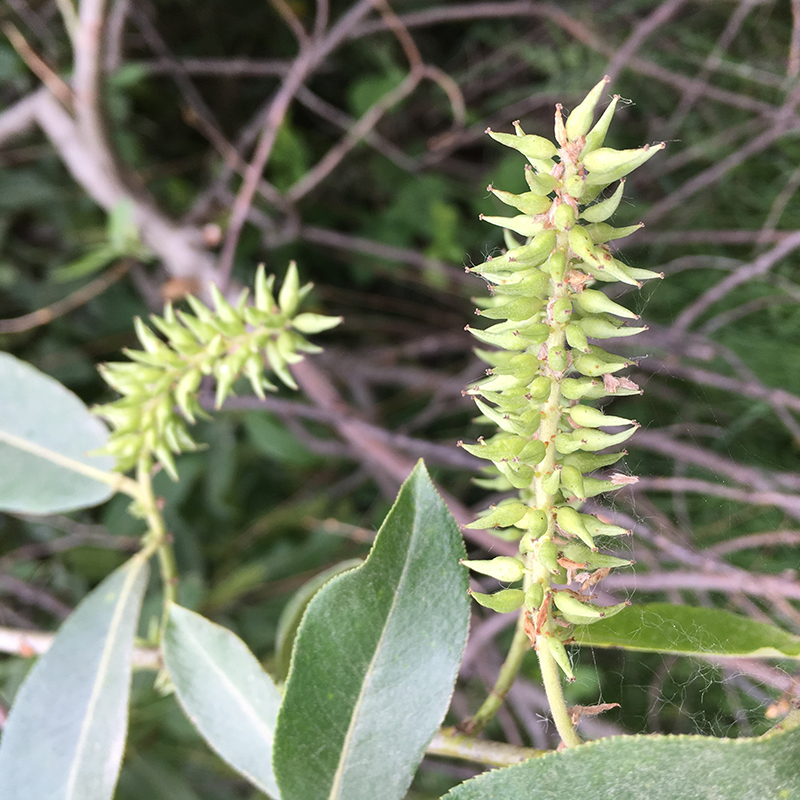 Pacific Willow is considered a “keystone plant” of western Washington, meaning it has the ability to provide habitat for a significant variety of wildlife. Its leaves are a sought-after food for various animals including deer, and beavers use its branches for dens and dams. Along waterways, willow offers shade that cools the water, benefiting salmon. And fallen branches create habitat cover and pools for aquatic life. Pacific Willow is a focal point in PNW restoration due to its regenerative properties when used as live stakes, effectively competing against invasives and aiding other plant growth through its bark and roots.
Pacific Willow is considered a “keystone plant” of western Washington, meaning it has the ability to provide habitat for a significant variety of wildlife. Its leaves are a sought-after food for various animals including deer, and beavers use its branches for dens and dams. Along waterways, willow offers shade that cools the water, benefiting salmon. And fallen branches create habitat cover and pools for aquatic life. Pacific Willow is a focal point in PNW restoration due to its regenerative properties when used as live stakes, effectively competing against invasives and aiding other plant growth through its bark and roots.
You can purchase these plants, or choose from over 90 more species during Oxbow’s Fall Native Plant Sale, September 23 from 10AM-4PM. It’s is not just an opportunity to shop; it’s a chance to connect with our community of knowledgeable experts and fellow gardening enthusiasts. This fall, let’s cultivate a beautiful and biodiverse landscape together. We can’t wait to see you there!
